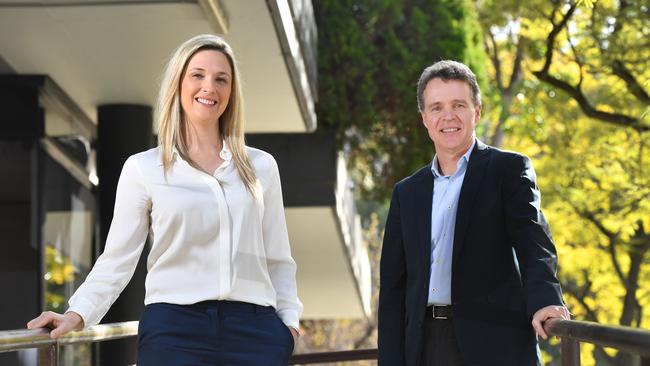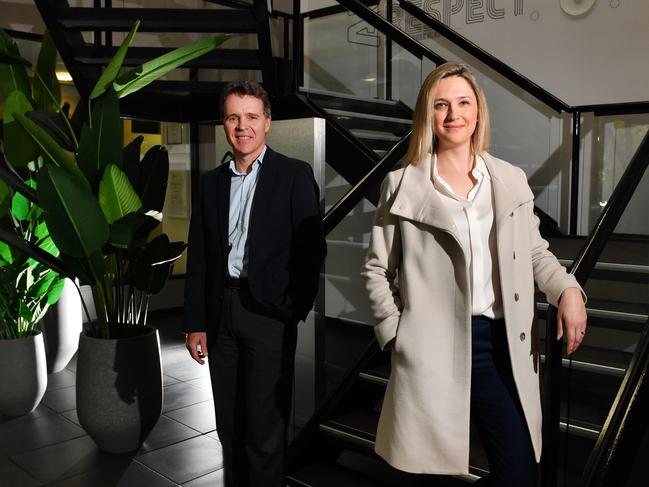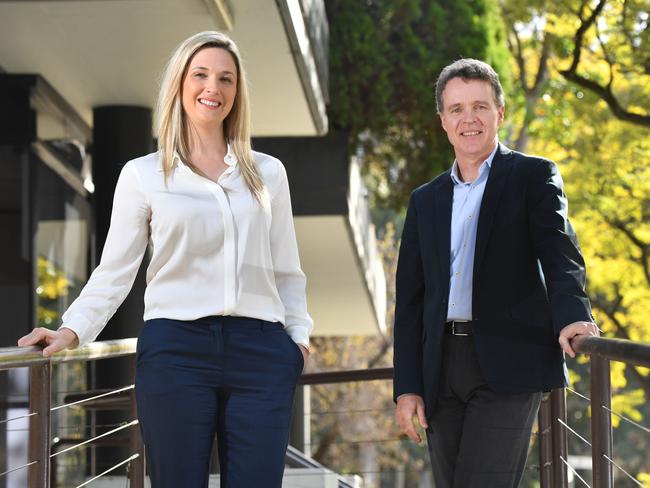Coronavirus concerns: business leaders managing disruption as workplaces reopen
Offices are reopening across many parts of the country, bringing a second wave of disruption for businesses. Leaders are stepping up to ease workers’ minds amid the continuing pandemic.

Careers
Don't miss out on the headlines from Careers. Followed categories will be added to My News.
Business leaders are stepping up to manage a second wave of disruption as many workers return to offices in line with easing COVID-19 restrictions.
Not only are teams having to go back to commuting, being supervised and wearing shoes again but they must adapt to new cleaning, meeting and social distancing protocols.
Social media analysis by media intelligence company Isentia revealed most Australians (88 per cent) felt negatively about returning to the office.
The top three reasons were that they felt safer working from home, did not trust workplaces to provide adequate social distancing measures and considered public transport too risky for their health.

Isentia insights director ANZ Ngaire Crawford said the research showed there was still a lot of apprehension in the community.
“It’s important for business leaders to remain respectful and supportive of their teams’ concerns and allow for the flexibility that employees need as we navigate yet another wave of change,” she said.
“In such an uncertain time, it is only human for us to crave choice, control and flexibility around our working conditions.
“The return to work road map will look different for each individual.
“Business leaders must continue to demonstrate empathy and compassion in their decision-making, and keep a careful eye out for those employees who may be struggling with the return to ‘business as usual’, regardless of what that looks like.”
R U OK? chief executive Katherine Newton shared her top tips for business leaders connecting with workforces during uncertain times:
CREATE A LIST
“Think about who in your team might be feeling overwhelmed by recent events,” she said.
DEDICATE THE TIME
“Make time to ask (‘are you OK?’) as part of your daily routine,” she said.
“This isn’t a ‘set and forget’ exercise but rather a commitment to check in with others each day so that they know you are there when they need you.”
CHOOSE YOUR CHANNEL
“Communicate in a way that works for both you and your team member – make a phone call, send a text, arrange a video call, or email,” she said.
“If you can meet in person, go for a physically-distanced walk and talk together or catch up over a cup of tea.”

GPEx chief executive Stephanie Clota, with almost 20 years’ experience in the health sector, said her leadership approach during the pandemic was focused on safety and wellbeing.
The general practitioner training organisation has a workforce of more than 60 people, including 20 medical educators who are practising GPs – six of which work in rural areas.
“We have ensured that workplace wellbeing programs have been front and centre during this period and have provided additional communications, programs and supports in place to back this up,” she said.
“Regular communication has been key, via video technology and frequent check-ins.
“My approach has been to create an environment in which everyone feels safe and secure amidst the uncertainty.
“Having GPs on our staff ensures we always keep employee health and wellbeing top of mind.”

Ms Clota started her leadership role in April, at the height of the pandemic and after all staff had begun working from home.
After three months working remotely, the team transitioned back to the office in line with South Australian guidelines and she was able to finally meet her team in person.
“While the pandemic has encouraged us to adopt new ways of staying connected, nothing can
replace face-to-face communication and the value of office conversations,” she said.
“On their return to the office, everyone received a care package consisting of named water bottle, chocolate gift, voucher for a local coffee shop, hand sanitiser and wipes.”

GPEx director of medical education and training Dr Paul Dilena, who manages a team of 18 medical educators, said clear decision-making at an executive level, regular communication and adhering to health department guidelines was critical during the pandemic.


